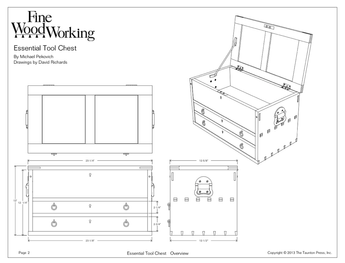How can I get close enough to the spindle when sanding without making sanding circles around the spindle itself? I find building furniture to be the easy part, But sanding to have a perfect finish seems to be quit difficult.
Discussion Forum
Get It All!
UNLIMITED Membership is like taking a master class in woodworking for less than $10 a month.
Start Your Free TrialCategories
Discussion Forum
Digital Plans Library
Member exclusive! – Plans for everyone – from beginners to experts – right at your fingertips.
Highlights
-
Shape Your Skills
when you sign up for our emails
This site is protected by reCAPTCHA and the Google Privacy Policy and Terms of Service apply. -
 Shop Talk Live Podcast
Shop Talk Live Podcast -
 Our favorite articles and videos
Our favorite articles and videos -
E-Learning Courses from Fine Woodworking
-
-
 Fine Woodworking New England Event
Fine Woodworking New England Event -












Replies
Do as much of the sanding as possible before assembly.
Tom
I did a lot of the sanding before assembling. but the didn't stop the glue squeeze out that I had to get off later.
Brandon,
Sounds to me like the glue squeeze out is the main reason for your having so much sanding and clean up around the spindles .
Squeeze out happens , what are you doing to clean it up besides sanding ?
Waiting until the glue is just dry enough not to be runny and a bit more dry can help much .
Using a very sharp chisel and slicing the glue off clean gives good results . A thin ribbon of a sanding belt can clean up the spindle end .
Try cutting the correct width sanding blocks then cut a 45° angle on one end place the sandpaper on the flat bottom , this will allow you to get very close to the spindle . Try a thinner block also with the angle cut on it .
hope this helps dusty
thanks for the advice.
What are you doing now? This will help us guide you toward the path your are seeking.
I'm making some Sam Maloof style dinning chairs. The chair came out great, But it drives me crazy to see the circular sanding marks at the base of the chair seat. I have worked my way through all of the different grits of sand paper but still see traces of scratch marks.
I guess by now you know you should have sanded better before assembly, and maybe ever pre-finished, so you could have just wiped it off with a damp cloth, but since you didn't here are some things that I would do.I have some little sanding disk that I use for detail carving and sanding that will get right up to a spindle, but is more detail than I want to go into here, now. But, I usually follow those tools with a little Sioux 3" random orbit sander that is great. I got it at
http://www.woodturnerscatalog.comHowever I ran onto this tool a few days ago, and one is on its way to me now. For the price, I don't know how badly I could go wrong if it isn't any good, however I think it will be pretty useful for a lot of the detail kind of work that I sometimes do.http://www.harborfreight.com/cpi/ctaf/displayitem.taf?Itemnumber=93629
Grab a fistful of coarse walnut shavings and with a medium speed, grasp the spinning leg with a hand full of the stuff(oak/maple/whatever?)
Maybe coffee grinds (DRY) Steinmetz.
Edited 8/14/2006 1:43 am ET by Steinmetz
This is what hand sanding is for. Sanding up against an edge/spindle prevents the ROS from randomizing itself away.
The drug store sells 220 grit sand paper adhered to stiff foam boards--the modern equivalent to emery boards for nails. These let you get into small spaces.
This forum post is now archived. Commenting has been disabled